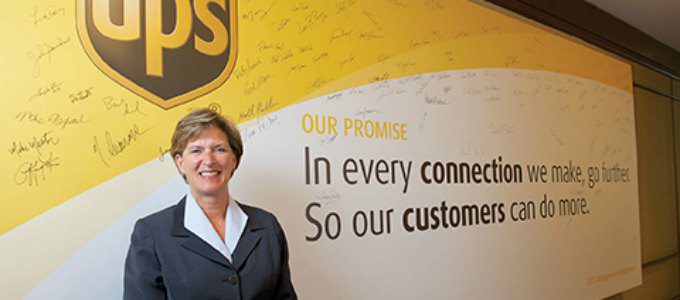By relying on a program designed to deliver the right training to each person at the right time in his or her career, UPS Inc. believes it can develop any employee into a leader who can eventually run a multibillion-dollar company.
To support this belief, UPS built a model that enables its widely dispersed, multidimensional organization to support and deliver learning that meets and exceeds organizational goals. “Through the UPS Strategic Enterprise Fund we’re investing to educate ourselves,” said Laura Collings, global learning network manager at UPS. “This is similar to a venture capital fund in that we’re investing to stay on top of new trends rather than in small startup companies.”
Established in 1997, the SEF is a business development tool that enables the company to explore emerging markets and technologies that may enhance its evolving business model. The fund monitors external business environments and allows UPS to learn from companies directly involved in the new economy. Knowledge gained from fund investments helps UPS enable global commerce by providing customers with tools to enhance every aspect of business. These tools broaden and speed the flow of goods, information and funds.
In the past few years, UPS has been able to recalibrate all of its resources — people, facilities and vehicles — to help meet market needs. For example, by investing in learning technology to support more than 400,000 employees around the world, UPS has been able to provide each one with flexible and customized development.
“The vision and mission are executed through our overall learning strategy to create a superior portfolio of leadership and talent development offerings that improve individual and organizational performance,” Collings said.
UPS’ blended approach to learning and development has allowed the company to optimize the cost per learner by providing classroom instruction more strategically while increasing overall impact. UPS expanded UPS University from 67,000 leaders in 2012 to more than 104,000 in 2013, with actual usage at 94 percent. In 2014, it expects to expand the audience again to include all of its administrative and technical employees.
The UPS learning and development team reports all of its findings every quarter to its talent management committee, a group of the highest-level senior leaders responsible for people development across the company. The learning team is responsible for demonstrating the impact and value of the learning organization to the committee, which serves as a link between corporate strategy and talent, performance and learning strategies.
UPS sees learning and development as an expense it cannot afford not to make. Collings called the company’s approach to L&D “constructively dissatisfied” as leaders are continually exploring ways to improve employee development while meeting customers’ needs.
In the past five years, UPS has transformed its business strategy to refocus the company’s approach toward profitability. Collings said by defining strategy, tactics, measurement and rewards, learning has had a significantly positive effect on her organization’s bottom line. “We transformed our learning during that time and discontinued our broad, sweeping, traditional classroom instructor-led training and moved to a more blended approach,” she said. “We still use instructor-led classrooms, but also utilize virtual instructor-led training, Web-based e-learning and on-the-job training.”
In addition to ongoing learning and development opportunities, UPS leadership and talent development leaders have the flexibility to target local, regional and job-specific needs as necessary. With access to a number of learning experiences, from webinars on training topics of interest to immersive learning experiences, leaders from across the company can share which practices work best, find new opportunities for learning and share results.
Further, by participating in benchmark studies, publishing successes and participating in conferences, UPS provides visibility into its success and strategic leadership and talent development activities for the learning industry at large.
“We know that we must continue to provide best-in-class training to ensure our people operate safely, deliver solutions to our customers and provide outstanding service,” Collings said.















